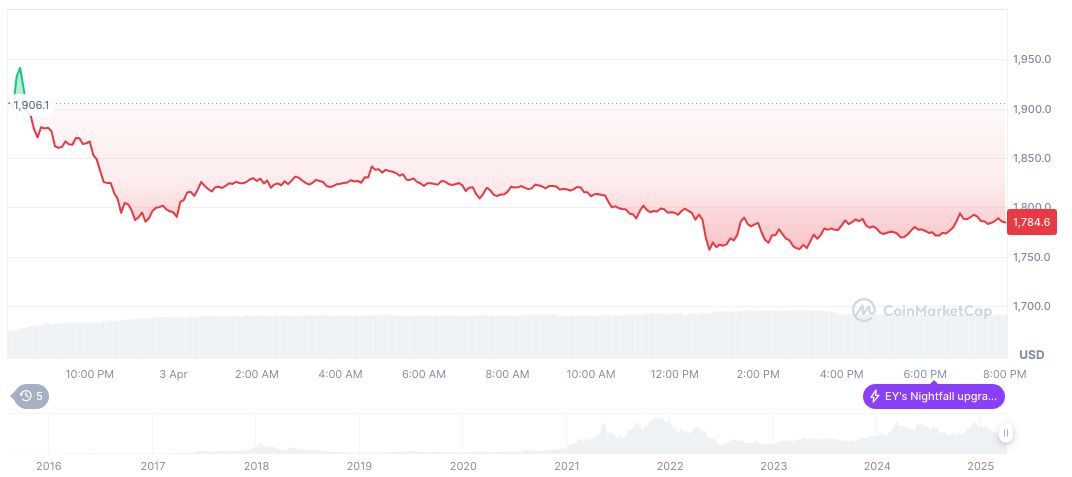 CaryptosHeadlines Media Has Launched Its Native Token CHT.
Airdrop Is Live For Everyone, Claim Instant 5000 CHT Tokens Worth Of $50 USDT.
Join the Airdrop at the official website,
CryptosHeadlinesToken.com
CaryptosHeadlines Media Has Launched Its Native Token CHT.
Airdrop Is Live For Everyone, Claim Instant 5000 CHT Tokens Worth Of $50 USDT.
Join the Airdrop at the official website,
CryptosHeadlinesToken.com
- Jerome Powell’s speech may alter Fed rate cut expectations.
- Market attention shifts to hawkish comments from Fed officials.
- Potential volatility in cryptocurrency and traditional markets predicted.
Jerome Powell’s speech may alter Fed rate cut expectations, drawing significant market attention.
Jerome Powell, Fed Chairman, is set to deliver a crucial speech on Friday, April 5, that might influence market expectations significantly. Analysts speculate that his language might shift towards a more hawkish stance, potentially impacting anticipated Fed rate cuts in June.
Institutional Actions and Cryptocurrency Market Response
Powell’s anticipated speech is sparking intense market interest. With previous commentary from Fed officials reflecting hawkish sentiments, market dynamics could see a shift if Powell concurs. A shift towards hawkish language could alter rate cut expectations. Investors are on alert as tariff impacts continue to loom over financial decisions.
Market conditions show notable activity, with institutional investors reflecting cautious sentiment. Large stakes in Ethereum and AAVE have been reported as influential figures, such as Binance CEO CZ, remain silent.
Market Data and Future Implications
Did you know? Major speeches by Fed Chairs historically lead to substantial market shifts, particularly in volatile economic periods. Comparative past events show notable rebalancing actions after such addresses.
Ethereum (ETH) exhibits significant price activity. Its current price is $1,809.38, down 2.80% in the last 24-hours, with larger declines over 30- and 60-day periods attributed to external factors. The market cap stands at $218.33 billion, as per CoinMarketCap, reflecting a broader market downturn.


Coincu’s research highlights potential implications. The speech may result in revised economic tactics, possibly impacting cryptocurrency value chains and regulatory developments. Data suggests caution in market strategies as investors gauge potential rate cut delays. Insights reveal patterns from prior economic scenarios, potentially guiding current decision-making.












